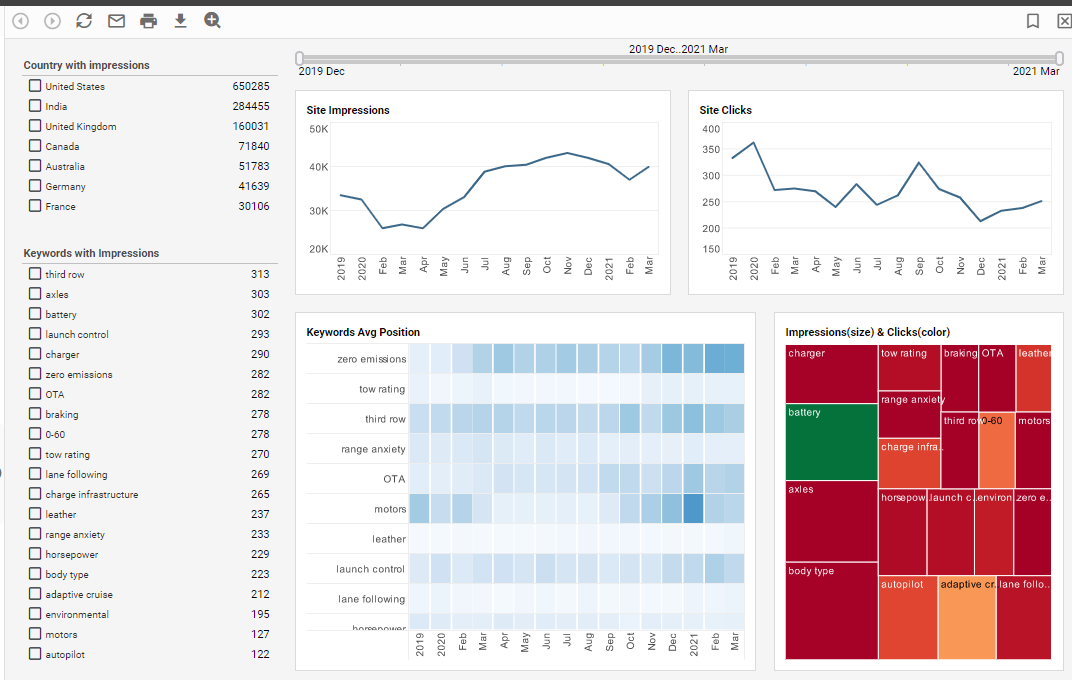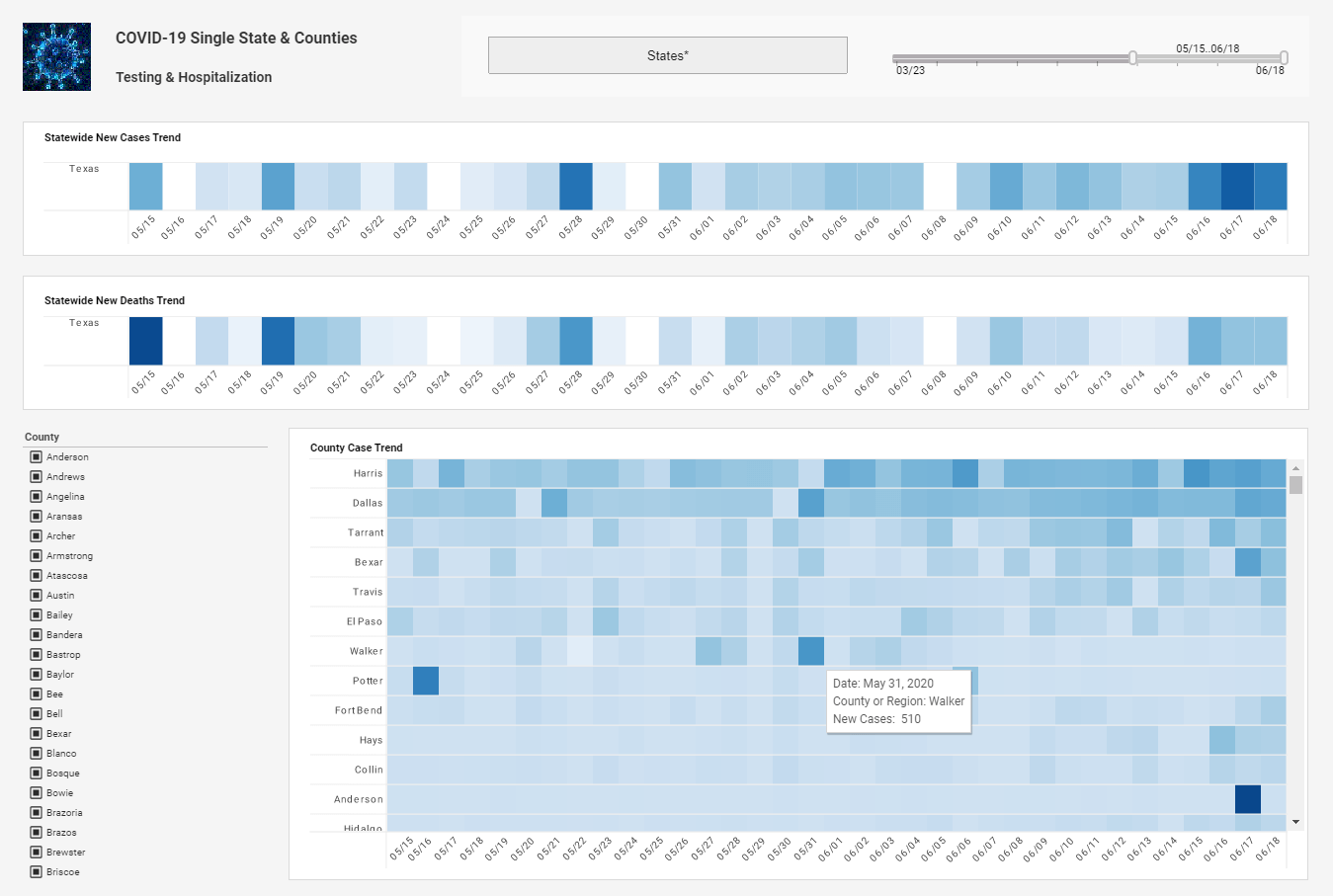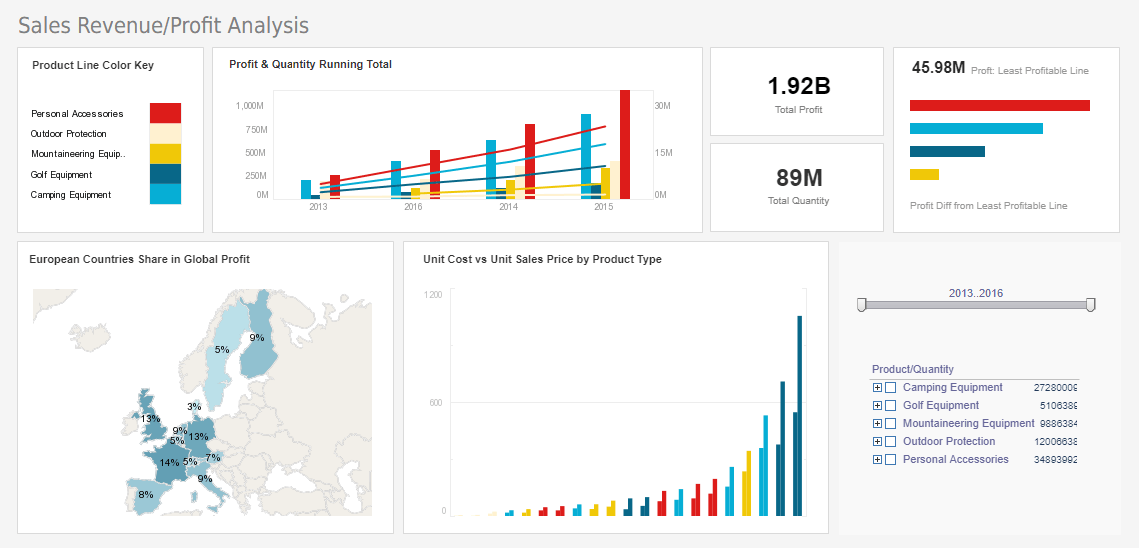Searching for a High Performance Dashboard?
Finding the best high performance dashboard for your company is vital to achieving success. High performance dashboards provide a path for businesses. In order to reach a certain destination, many key facts and data must be known and interpreted so that certain initiatives can be taken.
This is essentially the purpose of a high performance dashboard. It allows a company to view key metrics, analyze data, and optimizes their ability to make decisions based on what they know and see.
Given the best visual dashboard, managers can more efficiently view and execute strategies, processes, and objectives and as well as easily manage the activities which occur within a business.




An Agile and Secure Infrastructure
StyleBI from InetSoft provides a high performance dashboard which can drive your business to a new level of success. This high performance solution ensures a highly interactive, agile, and robust way to view in-depth metrics and satisfy business objectives with vital key performance indicators.
These dashboards have the necessary features to optimize business performance by providing the ability to efficiently:
- Monitor critical business processes and activities using metrics of business performance that trigger alerts when potential problems arise and when goals are met.
- Analyze the root cause of problems by exploring relevant and timely information from multiple perspectives and at various levels of detail.
- Manage people and processes to improve decisions, optimize performance and steer the organization in the right direction.
Benefits from InetSoft's Solution:
- Drag and drop is simple and easy – less help from IT
- No SQL skills are required
- Agile and secure infrastructure
- One stop shop: Includes dashboards, reporting, analytics, and access to practically any data source
InetSoft provides your company with flexibility. Not only does it provide attractive, easy-to-read tables and charts, but it is also highly customizable with a plethora of different filters and statistical options to satisfy your business' needs. InetSoft uses visualization-driven software atop a self-service environment, giving all users the ability to customize their search and view information the way they like.
High-Altitude Balloon Research Company Embraces InetSoft's Serverless Dashboard Microservice
The high-altitude balloon industry is an obscure but critical niche, providing atmospheric data collection and communications experiments for scientific institutions, aerospace contractors, and weather agencies. In this industry, the accuracy and timeliness of telemetry and environmental metrics can make or break mission success. For years, one mid-sized balloon research company relied on Domo’s BI platform to centralize data from onboard sensors, flight control systems, and ground-based observation stations. However, growing operational complexity, escalating licensing costs, and the need for highly customized analytics pushed the organization to re-evaluate its business intelligence stack.
After months of analysis, the company migrated from Domo to InetSoft's serverless dashboard microservice, a move that delivered measurable cost savings, improved performance, and far greater flexibility. This article breaks down the technical and financial rationale behind that switch and examines its impact across licensing, resource allocation, IT overhead, and user satisfaction at both the management and operational levels.
Licensing Cost Pressures
Domo’s licensing model, while convenient for smaller deployments, became a pain point as the balloon company expanded. The firm needed dashboards for engineering teams, mission controllers, clients, and compliance reporting. Each new user or data source pushed licensing fees upward, with per-seat pricing and volume-based data tiers adding to the burden. The annual contract grew into a six-figure expense even though not all users required the full feature set.
By contrast, InetSoft’s serverless dashboard microservice offered a flexible, usage-based model that aligned with the company’s real utilization. Instead of paying per named user, the firm deployed the microservice within its existing AWS infrastructure, integrating authentication with its SSO provider. This enabled unlimited internal and external users without additional per-seat fees. The cost was tied primarily to compute consumption, which scaled down automatically during periods of low activity, such as between balloon launches. The result was a 50% reduction in BI platform licensing costs within the first year.
Resource and Infrastructure Optimization
Domo’s cloud environment is fully managed, but it also has a fixed cost structure that does not necessarily take advantage of the customer’s existing cloud efficiencies. The balloon company already ran its telemetry ingestion and mission-control apps in AWS, with Kubernetes managing container workloads. Domo operated as a separate silo, which meant duplicated infrastructure for APIs, security layers, and monitoring.
With InetSoft’s serverless dashboard microservice, the team deployed lightweight containers alongside their data processing services. The dashboards tapped directly into existing S3 data lakes, PostgreSQL mission logs, and Kafka streams. There was no need for heavy ETL or additional staging databases; instead, InetSoft’s data mashup engine handled real-time joining and transformation. Compute costs were optimized via on-demand container scaling, and the firm consolidated monitoring through its existing Prometheus/Grafana stack.
From an IT perspective, this meant fewer moving parts, no redundant data pipelines, and the ability to use the same DevOps automation scripts they already had in place. Infrastructure costs dropped by about 30%, largely due to the elimination of Domo’s storage and processing overhead.
Lower Operational Overhead
Beyond infrastructure savings, the switch delivered a dramatic reduction in IT overhead. Under Domo, building a new dashboard or integrating a new sensor type required navigating a proprietary workflow and waiting on vendor support for certain connectors. The balloon company frequently onboarded new payload sensors that transmitted novel data formats. Adapting Domo for each new feed involved delays and additional consulting hours.
InetSoft’s microservice allowed the internal data engineering team to build connectors using their preferred languages and directly integrate them with APIs. Changes could be deployed in hours rather than weeks. Additionally, since the dashboard engine was embedded directly into their flight control portal, there was no need to maintain separate user training or access protocols. A single sign-on and a consistent UI simplified user adoption.
The IT department also benefited from open customization. Domo limited certain advanced visualization logic to its proprietary interface, while InetSoft exposed a full set of APIs for layout automation and custom visualization widgets. Engineering staff could code advanced telemetry overlays and integrate them directly into the dashboards without workarounds.
Support and Vendor Dependence
The balloon company’s experience with Domo support was mixed. While initial onboarding went smoothly, ongoing support tickets often took days to resolve, particularly for edge-case use scenarios common in aerospace telemetry analytics. Customization requests sometimes required professional services contracts, adding cost and friction.
InetSoft’s microservice model reduced vendor dependency. Because the solution was deployed within the company’s cloud, the team had full control over configuration and updates. Support requests dropped sharply because engineers could troubleshoot issues directly. When vendor input was needed, InetSoft’s team provided faster turnaround with direct developer-level support, often resolving complex connector issues within hours. The overall support costs, factoring in internal time and vendor contracts, decreased by more than 40%.
End-User and Management Satisfaction
Ultimately, any BI platform must serve its end users effectively. For the balloon company, this meant mission controllers, engineers, executives, and clients. Under Domo, management appreciated the visual polish but complained about lag when refreshing dashboards during active flights. Engineers wanted more granularity in data exploration and the ability to combine live sensor feeds with historical benchmarks in one unified view.
InetSoft’s dashboards addressed these concerns. Live mission telemetry streams could be visualized with less than two seconds of latency, enabling flight directors to make faster decisions. Engineers gained access to self-service data mashups, letting them compare current flight metrics with historical data sets and run anomaly detection queries without IT bottlenecks. Executives reported that financial and operational reporting became easier, with a single dashboard supporting multiple roles instead of maintaining separate customized Domo reports.
Client satisfaction also improved. When weather agencies and aerospace partners logged in to view balloon mission dashboards, they encountered a responsive and branded interface embedded directly within the company’s portal, not a redirected third-party domain. The seamless experience boosted trust and professional perception.

